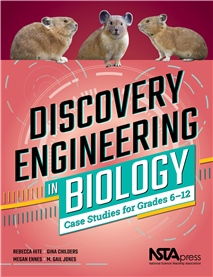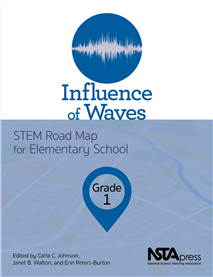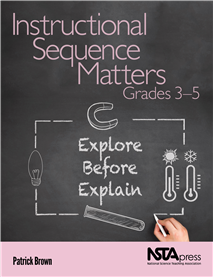All Book Chapters
Book Chapter
Mr. Antibiotic, Tear Down This (Cell) Wall
This chapter presents a case study on The Prokaryotic Resistance of Penicillin using the discovery engineering process. In this lesson, students explore the history and discovery of penicillin which revolutionized the treatment of bacterial infectio...
Book Chapter
This chapter presents a case study on Darwin’s Observations in the Galápagos Islands using the discovery engineering process. In this lesson, students explore the observations Charles Darwin made in the Galápagos Islands. They learn about cladist...
Book Chapter
This chapter presents a case study on Using Bioprospecting to Find Cures for Disease using the discovery engineering process. In this lesson, students explore paclitaxel, a chemical in the bark of Pacific yew trees that was discovered through biopro...
Book Chapter
This chapter presents a case study on Using CRISPR to Microedit the Genome using the discovery engineering process. In this lesson, students explore the process of CRISPR, a gene-editing tool used to insert beneficial genes or delete damaging genes ...
Book Chapter
Let’s Explore Motion Through Play!
In this lesson, students are introduced to the module challenge and begin to explore the concept of physics in motion through everyday play experiences. They make predictions about the motion of toys and participate in Physics in Motion Game Days, du...
Book Chapter
In this lesson, students explore the concept of physics in motion by exploring roller coasters and working in teams to create virtual roller coasters. The focus is on forces that act on roller coasters. We recommend reading Chapter 3, which is includ...
Book Chapter
Roller Coaster Design Challenge
In this lesson, students work in teams to use the engineering design process (EDP). They apply their learning from previous lessons to design, build, and test various marble track roller coasters. We recommend reading Chapter 3, which is included in...
Book Chapter
This lesson introduces waves as traveling disturbances that move through space and substances to transfer energy. Students explore the concept of waves through interactive read-alouds, a video, and an inquiry activity in which they explore waves in w...
Book Chapter
In this lesson, students explore the concept of sound through interactive read-alouds, videos, and inquiry activities. They create a simple communication device to investigate the role of sound in communicating over distances. Students also learn the...
Book Chapter
In this lesson, students explore the concept of light through interactive read-alouds, viewing videos, and an inquiry activity in which they investigate how light interacts with various materials. We recommend reading Chapter 3, which is included in ...
Book Chapter
In this lesson, students synthesize their learning from the previous lessons to address the module challenge. They demonstrate their learning about light and sound waves by creating a musical performance that incorporates light. Students also use the...
Book Chapter
Rethinking Development and Learning
This chapter starts with the research on learning and cognition. It takes you through some of the emerging ideas about students’ intellectual abilities in terms of developmental psychology, neuroscience, and cognitive science research and the impli...
Book Chapter
Connecting Hands-On With Minds-On Experiences
This chapter shows why the exact placement of activities in instruction is pivotal in learning and compares two different hands-on approaches. Assertions are provided about why “explore-before-explain” teaching is beneficial for learners with abu...
Book Chapter
Modern Sequences of Instruction
This chapter discusses the key components of two contemporary sequences of science instruction. You will read about the phases of the Predict, Observe, and Explain (POE) and 5E instructional models. The activity boxes included are aimed at helping yo...
Book Chapter
Content and Process Working Together
This chapter describes the construction of the Next Generation Science Standards (NGSS). Some activities are shared to reflect on the lessons you currently use and the connections to components of the NGSS. The activity box included is meant to provi...





